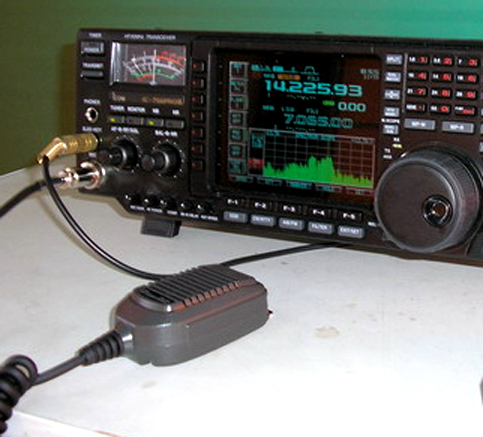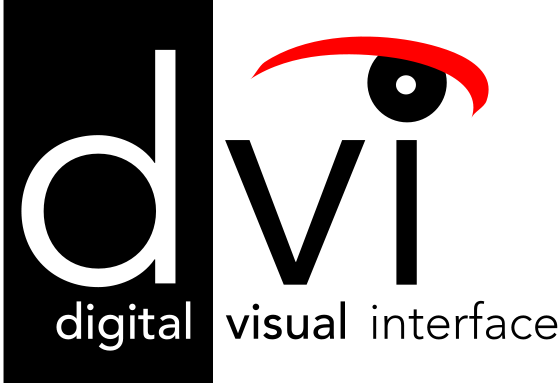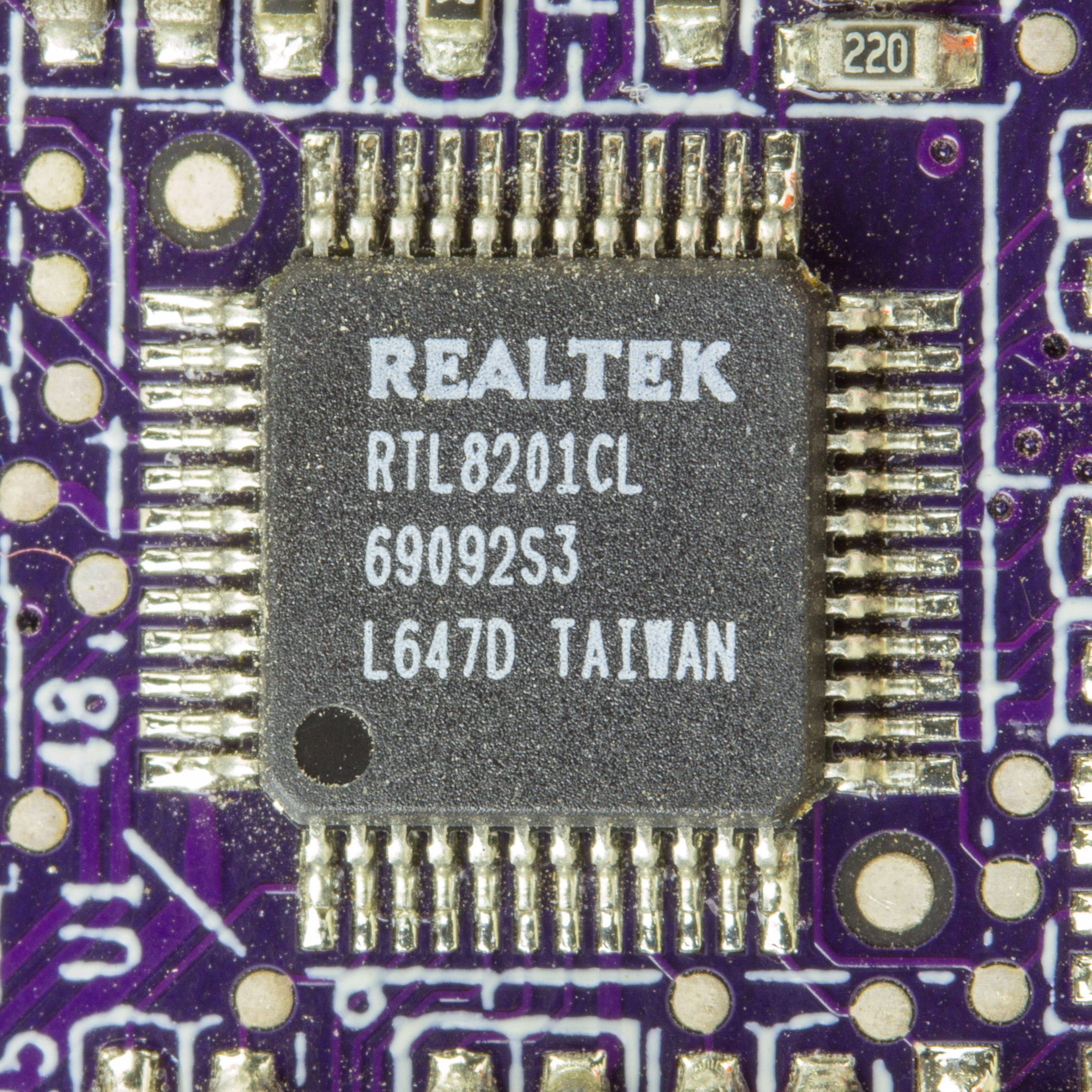|
Current Mode Logic
Current mode logic (CML), or source-coupled logic (SCL), is a digital design style used both for logic gates and for board-level digital signaling of digital data. The basic principle of CML is that current from a constant current generator is steered between two alternate paths depending on whether a logic zero or logic one is being represented. Typically, the generator is connected to the two sources of a pair of differential FETs, with the two paths being their two drains. Bipolar equivalents operate similarly, with the output being taken from the collectors of the BJT transistors. As a differential PCB-level interconnect, it is intended to transmit data at speeds between 312.5 Mbit/s and 3.125 Gbit/s across standard printed circuit boards. The transmission is point-to-point, unidirectional, and is usually terminated at the destination with 50 Ω resistors to Vcc on both differential lines. CML is frequently used in interfaces to fiber optic components. ... [...More Info...] [...Related Items...] OR: [Wikipedia] [Google] [Baidu] |
Logic Family
In computer engineering, a logic family is one of two related concepts: * A logic family of monolithic digital integrated circuit devices is a group of electronic logic gates constructed using one of several different designs, usually with compatible logic levels and power supply characteristics within a family. Many logic families were produced as individual components, each containing one or a few related basic logical functions, which could be used as "building-blocks" to create systems or as so-called "glue" to interconnect more complex integrated circuits. * A logic family may also be a set of techniques used to implement logic within VLSI integrated circuits such as central processors, memories, or other complex functions. Some such logic families use static techniques to minimize design complexity. Other such logic families, such as domino logic, use clocked dynamic techniques to minimize size, power consumption and delay. Before the widespread use of integrated circuits, ... [...More Info...] [...Related Items...] OR: [Wikipedia] [Google] [Baidu] |
Emitter Follower
In electronics, a common collector amplifier (also known as an emitter follower) is one of three basic single-stage bipolar junction transistor (BJT) amplifier topologies, typically used as a voltage buffer. In this circuit the base terminal of the transistor serves as the input, the emitter is the output, and the collector is ''common'' to both (for example, it may be tied to ground reference or a power supply rail), hence its name. The analogous field-effect transistor circuit is the common drain amplifier and the analogous tube circuit is the cathode follower. Basic circuit The circuit can be explained by viewing the transistor as being under the control of negative feedback. From this viewpoint, a common-collector stage (Fig. 1) is an amplifier with full series negative feedback. In this configuration (Fig. 2 with β = 1), the entire output voltage ''V''out is placed contrary and in series with the input voltage ''V''in. Thus the two voltages are subtracted according ... [...More Info...] [...Related Items...] OR: [Wikipedia] [Google] [Baidu] |
Transceiver
In radio communication, a transceiver is an electronic device which is a combination of a radio ''trans''mitter and a re''ceiver'', hence the name. It can both transmit and receive radio waves using an antenna, for communication purposes. These two related functions are often combined in a single device to reduce manufacturing costs. The term is also used for other devices which can both transmit and receive through a communications channel, such as ''optical transceivers'' which transmit and receive light in optical fiber systems, and ''bus transceivers'' which transmit and receive digital data in computer data buses. Radio transceivers are widely used in wireless devices. One large use is in two-way radios, which are audio transceivers used for bidirectional person-to-person voice communication. Examples are cell phones, which transmit and receive the two sides of a phone conversation using radio waves to a cell tower, cordless phones in which both the phone handset and ... [...More Info...] [...Related Items...] OR: [Wikipedia] [Google] [Baidu] |
Serial Communication
In telecommunication and data transmission, serial communication is the process of sending data one bit at a time, sequentially, over a communication channel or computer bus. This is in contrast to parallel communication, where several bits are sent as a whole, on a link with several parallel channels. Serial communication is used for all long-haul communication and most computer networks, where the cost of cable and synchronization difficulties make parallel communication impractical. Serial computer buses are becoming more common even at shorter distances, as improved signal integrity and transmission speeds in newer serial technologies have begun to outweigh the parallel bus's advantage of simplicity (no need for serializer and deserializer, or SerDes) and to outstrip its disadvantages (clock skew, interconnect density). The migration from PCI to PCI Express is an example. Cables Many serial communication systems were originally designed to transfer data over relatively ... [...More Info...] [...Related Items...] OR: [Wikipedia] [Google] [Baidu] |
Computer Monitor
A computer monitor is an output device that displays information in pictorial or textual form. A discrete monitor comprises a visual display, support electronics, power supply, housing, electrical connectors, and external user controls. The display in modern monitors is typically an LCD with LED backlight, having by the 2010s replaced CCFL backlit LCDs. Before the mid- 2000s, most monitors used a CRT. Monitors are connected to the computer via DisplayPort, HDMI, USB-C, DVI, VGA, or other proprietary connectors and signals. Originally, computer monitors were used for data processing while television sets were used for video. From the 1980s onward, computers (and their monitors) have been used for both data processing and video, while televisions have implemented some computer functionality. In the 2000s, the typical display aspect ratio of both televisions and computer monitors has changed from 4:3 to 16:9. Modern computer monitors are mostly interchangeable with television ... [...More Info...] [...Related Items...] OR: [Wikipedia] [Google] [Baidu] |
Display Controller
A video display controller or VDC (also called a display engine or display interface) is an integrated circuit which is the main component in a video-signal generator, a device responsible for the production of a TV video signal in a computing or game system. Some VDCs also generate an audio signal, but that is not their main function. VDCs were used in the home computers of the 1980s and also in some early video picture systems. The VDC is the main component of the video signal generator logic, responsible for generating the timing of video signals such as the horizontal and vertical synchronization signals and the blanking interval signal. Sometimes other supporting chips were necessary to build a complete system, such as RAM to hold pixel data, ROM to hold character fonts, or some discrete logic such as shift registers. Most often the VDC chip is completely integrated in the logic of the main computer system, (its video RAM appears in the memory map of the main CPU), ... [...More Info...] [...Related Items...] OR: [Wikipedia] [Google] [Baidu] |
FPD-Link
Flat Panel Display Link, more commonly referred to as FPD-Link, is the original high-speed digital video interface created in 1996 by National Semiconductor (now within Texas Instruments). It is a free and open standard for connecting the output from a graphics processing unit in a laptop, tablet computer, flat panel display, or LCD television to the display panel's timing controller. Most laptops, tablet computers, flat-panel monitors, and TVs use the interface internally. FPD-Link and LVDS FPD-Link was the first large-scale application of the low-voltage differential signaling (LVDS) standard. National Semiconductor immediately provided interoperability specifications for the FPD-Link technology in order to promote it as a free and open standard, and thus other IC suppliers were able to copy it. FlatLink by TI was the first interoperable version of FPD-Link. By the end of the twentieth century, the major notebook computer manufacturers created the Standard Panels Working ... [...More Info...] [...Related Items...] OR: [Wikipedia] [Google] [Baidu] |
HDMI
High-Definition Multimedia Interface (HDMI) is a proprietary audio/video interface for transmitting uncompressed video data and compressed or uncompressed digital audio data from an HDMI-compliant source device, such as a display controller, to a compatible computer monitor, video projector, digital television, or digital audio device. HDMI is a digital replacement for analog video standards. HDMI implements the EIA/CEA-861 standards, which define video formats and waveforms, transport of compressed and uncompressed LPCM audio, auxiliary data, and implementations of the VESA EDID. CEA-861 signals carried by HDMI are electrically compatible with the CEA-861 signals used by the Digital Visual Interface (DVI). No signal conversion is necessary, nor is there a loss of video quality when a DVI-to-HDMI adapter is used. The Consumer Electronics Control (CEC) capability allows HDMI devices to control each other when necessary and allows the user to operate multiple devices with on ... [...More Info...] [...Related Items...] OR: [Wikipedia] [Google] [Baidu] |
Digital Visual Interface
Digital Visual Interface (DVI) is a video display interface developed by the Digital Display Working Group (DDWG). The digital interface is used to connect a video source, such as a video display controller, to a display device, such as a computer monitor. It was developed with the intention of creating an industry standard for the transfer of digital video content. This interface is designed to transmit uncompressed digital video and can be configured to support multiple modes such as DVI-A (analog only), DVI-D (digital only) or DVI-I (digital and analog). Featuring support for analog connections, the DVI specification is compatible with the VGA interface. This compatibility, along with other advantages, led to its widespread acceptance over competing digital display standards Plug and Display (P&D) and Digital Flat Panel (DFP). Although DVI is predominantly associated with computers, it is sometimes used in other consumer electronics such as television sets and DVD play ... [...More Info...] [...Related Items...] OR: [Wikipedia] [Google] [Baidu] |
Physical Layer
In the seven-layer OSI model of computer networking, the physical layer or layer 1 is the first and lowest layer; The layer most closely associated with the physical connection between devices. This layer may be implemented by a PHY chip. The physical layer provides an electrical, mechanical, and procedural interface to the transmission medium. The shapes and properties of the electrical connectors, the frequencies to broadcast on, the line code to use and similar low-level parameters, are specified by the physical layer. Role The physical layer defines the means of transmitting a stream of raw bits over a physical data link connecting network nodes. The bitstream may be grouped into code words or symbols and converted to a physical signal that is transmitted over a transmission medium. The physical layer consists of the electronic circuit transmission technologies of a network. It is a fundamental layer underlying the higher level functions in a network, and can be imple ... [...More Info...] [...Related Items...] OR: [Wikipedia] [Google] [Baidu] |
Characteristic Impedance
The characteristic impedance or surge impedance (usually written Z0) of a uniform transmission line is the ratio of the amplitudes of voltage and current of a single wave propagating along the line; that is, a wave travelling in one direction in the absence of reflections in the other direction. Alternatively, and equivalently, it can be defined as the input impedance of a transmission line when its length is infinite. Characteristic impedance is determined by the geometry and materials of the transmission line and, for a uniform line, is not dependent on its length. The SI unit of characteristic impedance is the ohm. The characteristic impedance of a lossless transmission line is purely real, with no reactive component. Energy supplied by a source at one end of such a line is transmitted through the line without being dissipated in the line itself. A transmission line of finite length (lossless or lossy) that is terminated at one end with an impedance equal to the characteris ... [...More Info...] [...Related Items...] OR: [Wikipedia] [Google] [Baidu] |
Transmission Line
In electrical engineering, a transmission line is a specialized cable or other structure designed to conduct electromagnetic waves in a contained manner. The term applies when the conductors are long enough that the wave nature of the transmission must be taken into account. This applies especially to radio-frequency engineering because the short wavelengths mean that wave phenomena arise over very short distances (this can be as short as millimetres depending on frequency). However, the theory of transmission lines was historically developed to explain phenomena on very long telegraph lines, especially submarine telegraph cables. Transmission lines are used for purposes such as connecting radio transmitters and receivers with their antennas (they are then called feed lines or feeders), distributing cable television signals, trunklines routing calls between telephone switching centres, computer network connections and high speed computer data buses. RF engineers commonly ... [...More Info...] [...Related Items...] OR: [Wikipedia] [Google] [Baidu] |





